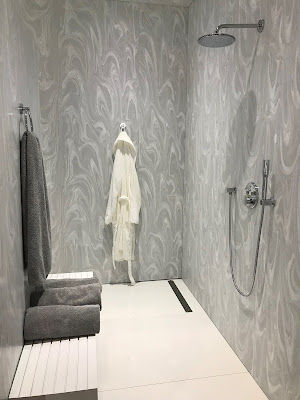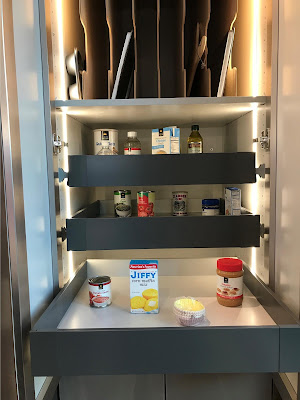 In a split second, your life can be changed forever. Of course, you never think it will happen to you. When you’re least expecting it, you fall. How many people do you know who have fallen? Personally, a few of my loved ones have had this experience. Resulting from a medication change, my amazing mom became dizzy, fell, and broke her pelvis. My dear, Aunt Marie tripped on her small poodle, leading to a broken hip and shoulder. She fell again during rehab and, because she was still weak from her first fall, broke her other hip.
In a split second, your life can be changed forever. Of course, you never think it will happen to you. When you’re least expecting it, you fall. How many people do you know who have fallen? Personally, a few of my loved ones have had this experience. Resulting from a medication change, my amazing mom became dizzy, fell, and broke her pelvis. My dear, Aunt Marie tripped on her small poodle, leading to a broken hip and shoulder. She fell again during rehab and, because she was still weak from her first fall, broke her other hip. Ten years ago, it even happened to me! While riding my bicycle at Ft. DeSoto Park, I was hit by a distracted driver. I sustained several injuries, including a broken back, pelvis, shoulder and knee cap. You would think I would have learned; apparently, I hadn’t. At night, while walking our dog Buster, I tripped on a sprinkler head and broke my arm. Where was my flashlight? Why wasn’t I paying attention instead of texting on my phone? Why did I have that glass of wine before my walk? It was an accident waiting to happen.
Ten years ago, it even happened to me! While riding my bicycle at Ft. DeSoto Park, I was hit by a distracted driver. I sustained several injuries, including a broken back, pelvis, shoulder and knee cap. You would think I would have learned; apparently, I hadn’t. At night, while walking our dog Buster, I tripped on a sprinkler head and broke my arm. Where was my flashlight? Why wasn’t I paying attention instead of texting on my phone? Why did I have that glass of wine before my walk? It was an accident waiting to happen.Many Factors Contribute To Falls
Some of us have a predisposition to falling. Overall health plays a significant role in this malady, along with other factors, including: vision, medication, and recent surgery. As you age, environmental challenges related to the loss of strength and balance, also make falls more likely. Demographic factors may also contribute to your likelihood of falling.
Did you know?
- For people over the age of 65, falls are the leading cause of death
- Almost 90% of fractures in the 65+ age group are the result of falls
- Within 6 months, 2/3 of fall victims will fall, again
- If you become hospitalized as the result of a fall, your stay will be 2X longer than those who are admitted for another reason
- If they aren’t injured, 50% of fall victims will be incapable of getting up without assistance. This mishap can have additional effects, including:
- Dehydration
- Pressure Sores
- Hypothermia
- Pneumonia
Let’s run some numbers!
11
Every 11 seconds, in the emergency room, an older adult is treated for a fall.
65
According to the National Council on Aging, 1/4 Americans ages 65+, will fall each year.
7,000,000
In 2014, older Americans experienced 29 million falls, resulting in 7 million injuries.
19
Every 19 minutes, an older adult will die from falling
95%
Each year, more than 300,000 people are hospitalized from broken hips. According to the Centers for Disease Control (CDC),95% of these fractures are the result of a fall.
50%
Among older adults, falls are the leading cause of fatal injury, and the most frequent reason for non-fatal trauma. Falls take a psychological toll, as well! Up to 50% of those who fear falling, limit or exclude social or physical activities.
2,800,000
Annually, falls result in more than 2.8 million injuries treated in emergency departments. These visits to the ER include over 800,000 hospitalizations, and more than 27,000 deaths.
 80%
80%According to NewsUSA, 80% of falls happen in the bathroom. In addition, 30%–50% of falls are due to environmental causes. This statistic is especially worrisome for a population of older adults, who are active in their communities. For example, a fall could result from: poor lighting, slippery floors, and uneven surfaces. According to Medical Alert Advice, 1/3 adults experiences difficulty getting into, and out of, the bathtub or shower.
$30,000
The average cost for treating a fall.
$67,000,000,000
The total estimated cost of falls, by 2020, in the USA.
Don’t’ FALL! Take our Fall Prevention Quiz
- Do you have a pet?
- Most of the time, do you wear sensible shoes? This excludes flip flops or high heels
- Do you have stairs to enter your home or condo?
- If you have entry stairs, do you have a handrail? If so, is there a handrail on both sides? Can you access it?
- When unlocking the door, do you have a place to put down your packages?
- Do you have ample lighting in your entry area? Is your lighting on either a motion-sensor or a timer?
- Do you have grab bars installed in your bathing area?
- Do you have a handheld shower unit? Is there a shower bench or a place to sit down?
- Do you have indoor stairs? If so, are there handrails on both sides?
- How much clutter is on the floor?
- Do you have throw rugs?
- At night, to access the restroom, do you have motion-sensor nightlights?
- Do you have difficulty getting up/down from the toilet? Is your toilet at a comfortable height.
- In your kitchen, do you store heavy items in an area that’s easy and safe to access?
- Do you have an alert system, which could include an Apple Watch for Fall Detection?
Keeping a neat and tidy home is the easiest method for preventing falls. Remove all clutter, especially from hallways and staircases. Reorganize your kitchen, and make it easy to access items without a stepstool.
2. Repair or remove tripping hazards
Check every room and hallway, looking for objects, such as: loose items, slippery throw rugs, or wood floorboards that stick up. Afterward, repair, remove, or replace those items.
3. Install grab or assist bars and handrails.
These safety devices are crucial for going up and down stairs, getting on and off the toilet, and safely stepping in and out of the shower or bathtub. New for 2019, if recommended by a medical professional, assist bars and handrails are covered by the Medicare Advantage plan.
4. Avoid wearing loose clothing.
Sometimes, baggy clothes can make it easier to trip and fall. Better-fitting and properly-hemmed clothing can eliminate this hazard.
5. Light it right.
Inadequate lighting is another major hazard. To create a home that’s more suitable, install brighter light bulbs, particularly in stairways and narrow hallways. Install inexpensive night-lights that are on motion sensors. These devices will provide better guidance into bedrooms and bathrooms at night. Entry lighting should be bright. These lights should also be on a timer or motion sensor, especially in preparation for when you arrive home after dark.
6. Wear shoes.
At home, preventing falls can be as simple as wearing close-toed shoes instead of flip-flops. If shoes are too uncomfortable, you can also purchase non-slip socks, with grips on the soles.
7. Make it nonslip.
Bathtubs and showers, as well as floors in kitchens, bathrooms, and porches, can become extremely dangerous when wet. To prevent falls on slick surfaces, install nonslip mats.
8. Move more carefully and take your time.
By moving too quickly from a sitting to a standing position, and vice versa, many people fall at home. When getting up from bed, sitting for a minute can prevent a dizzy spell.
9. Pay attention.
Do one thing at a time. Don’t text and walk. Be aware of your pet’s location, especially when food is involved. To see or hear them better, attach a bell to his/her bright-colored collar.
10. Ask for help.
If ceiling lightbulbs need changing, high windows need washing, or gutters need cleaning, do not get on a ladder or step stool without help, or before asking someone for assistance.
11. Think ahead and be smart.
A scooter, an accessible vehicle, or other assistive devices can increase safety and independence! Visit us at Custom Mobility to see what is available. We are here to help you live life to the fullest! Custom Mobility Inc. is located @ 7199 Byran Dairy Road Largo, FL 33777. Or call us: 727-539-8199
12. Go to the FREE Defying Gravity, Fall Prevention Play
SAGES (Senior Actors Guild & Education Services) is hosting this play on Saturday, April 27th at 2-3:30, in the Largo Community Center, 400 Alt Keene Rd, Largo FL 33771. Click here to register for free.
Helpful Links
Author:
Mary Carol Peterson








No comments:
Post a Comment